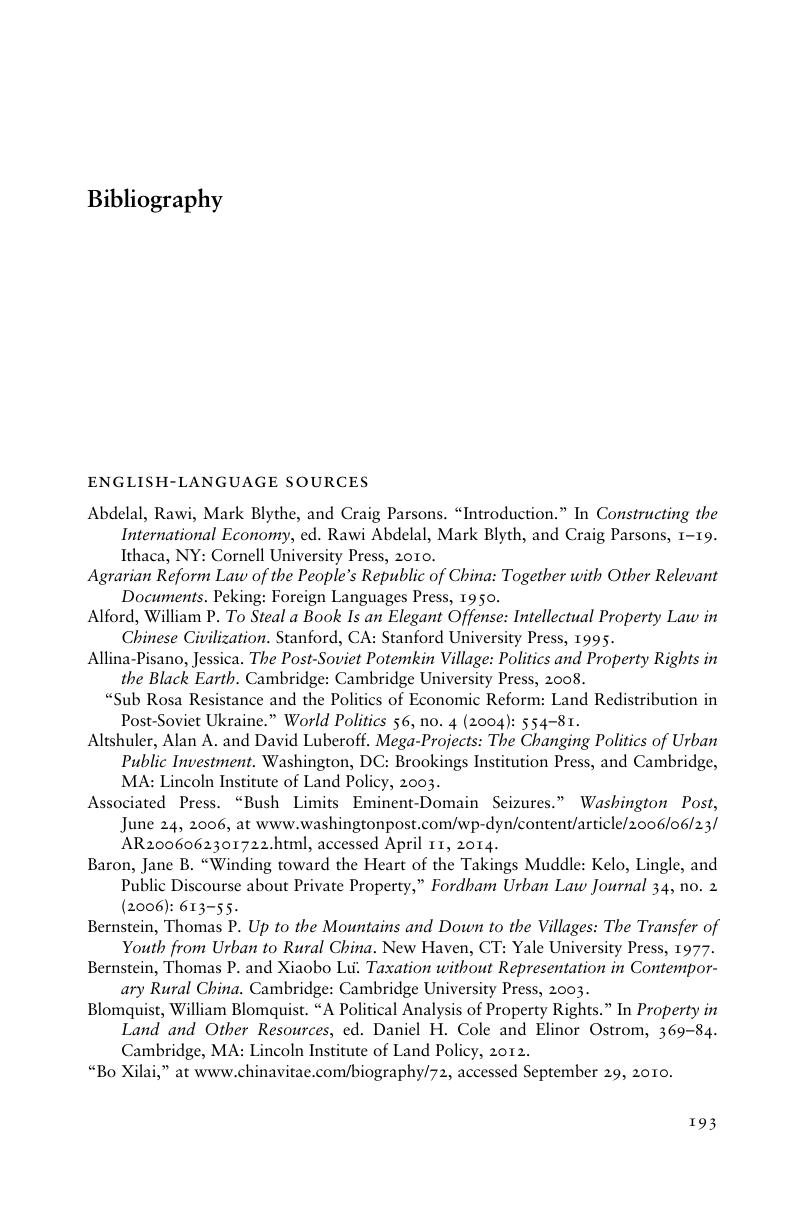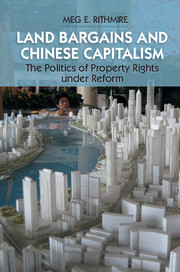Book contents
- Frontmatter
- Dedication
- Contents
- List of tables
- List of figures
- Acknowledgments
- List of Abbreviations
- Glossary
- 1 Property and Politics in China
- 2 The Making of the Real Estate Economy: Urban Reform and the Origins of the Party's Land Dilemma
- 3 The Political Economies of China
- 4 “Land as a State Asset”: Global Capital and Local State Power in Dalian
- 5 Property Rights and Distributive Politics: Urban Conflict and Change in Harbin, 1978 to the Present
- 6 Changchun Motor City: The Politics of Compromise in an Industrial Town
- 7 Conclusions
- Bibliography
- Index
- References
Bibliography
Published online by Cambridge University Press: 05 November 2015
- Frontmatter
- Dedication
- Contents
- List of tables
- List of figures
- Acknowledgments
- List of Abbreviations
- Glossary
- 1 Property and Politics in China
- 2 The Making of the Real Estate Economy: Urban Reform and the Origins of the Party's Land Dilemma
- 3 The Political Economies of China
- 4 “Land as a State Asset”: Global Capital and Local State Power in Dalian
- 5 Property Rights and Distributive Politics: Urban Conflict and Change in Harbin, 1978 to the Present
- 6 Changchun Motor City: The Politics of Compromise in an Industrial Town
- 7 Conclusions
- Bibliography
- Index
- References
Summary

- Type
- Chapter
- Information
- Land Bargains and Chinese CapitalismThe Politics of Property Rights under Reform, pp. 193 - 213Publisher: Cambridge University PressPrint publication year: 2015



